 Back
Back

We can represent a complex number by a vector as shown below for the complex number "s," where s=1+3j. The magnitude of "s" is the length of the red vector, and the angle of "s" is shown by the red arc. Another complex number "z" is also shown; z=2-j.
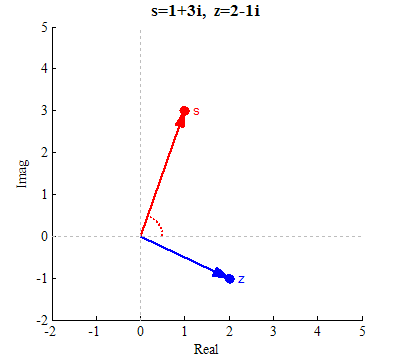
To add the two vectors, s+z, you can simply move the z vector such that it starts at the end of the s-vector (as shown by the upper blue vector in the diagram below). The resulting vector, s+z, is shown in green.
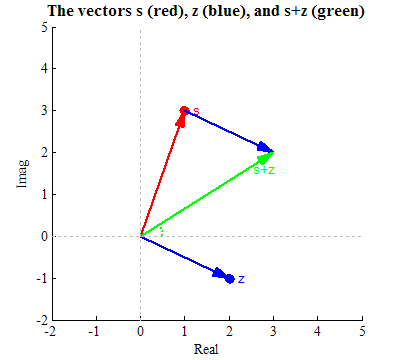
To add two vectors, s+z, simply move the vector z to the end of the vector s.
To subtract the two vectors to get s-z, we must first show the vector -z (light blue in the figure below).
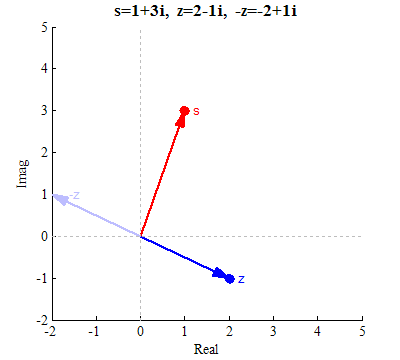
Now you can simply move the -z vector such that it starts at the end of the s-vector (as shown by the light blue vector in the diagram below). The resulting vector, s-z, is shown in green. Note that the angle of the vector is shown by the arc between the vector and the horizontal axis.
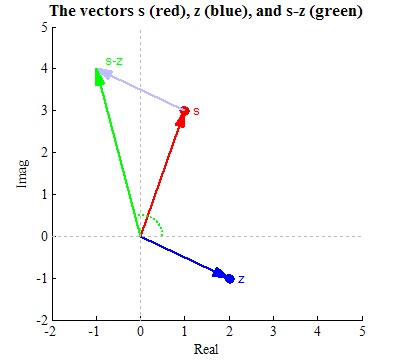
It is also possible to find the magnitude and angle of the s-z vector by simply drawing a vector from z to s. This is shown in light green in the diagram below. This is usually the quickest way to find the difference between two vectors. Note that the angle of the vector is shown by the arc between the vector and a horizontal line and is the same as the angle in the previous graph.
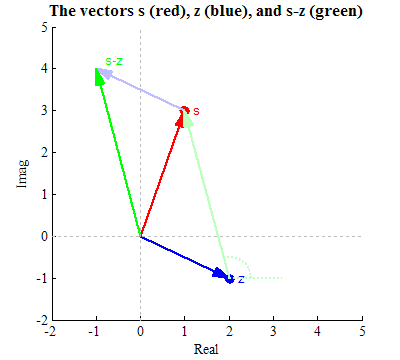
To find the magnitude and direction of the difference between two vectors, s-z, simply draw a vector from z to s.
© Copyright 2005 to 2019 Erik Cheever This page may be freely used for educational purposes.
Erik Cheever Department of Engineering Swarthmore College